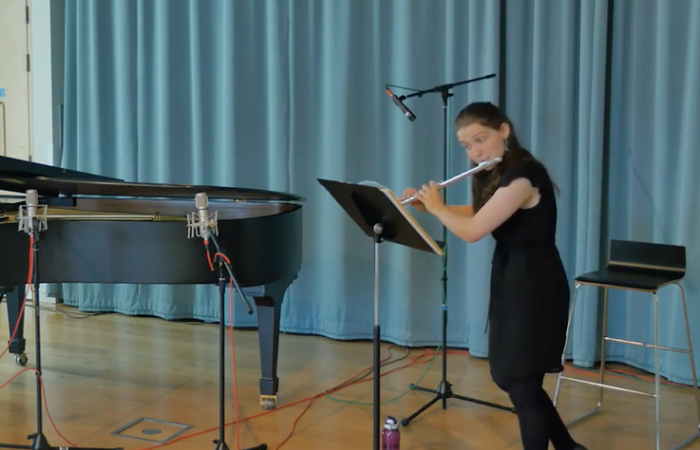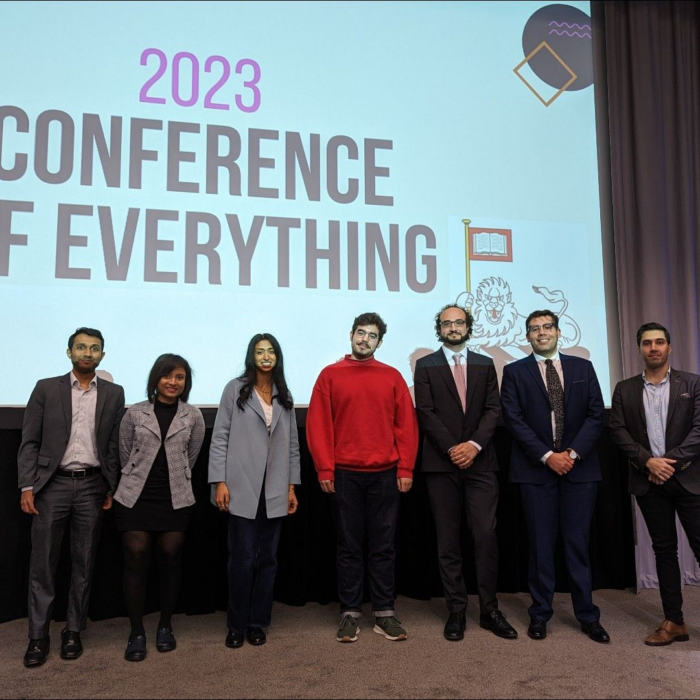If you find yourself in a situation of unforeseen financial hardship, you should contact the Tutorial Office (if you are an undergraduate) or the Postgraduate Office. They are the best source of support and information.
Additional financial support in the form of studentships, bursaries and grants are available to help fund other opportunities.
If you’re seeking financial advice, or are worried about money, the best person to start with is your Tutor, or the University’s Financial Support pages may be able to help answer some of your questions.
Hardship Grants
Churchill College puts funds aside to support students facing hardship. The Development Office support these funds by raising money for the Student Support Fund and we’re grateful to our donors who enable this.
Applications for College Hardship Grants usually come from the Tutor, accompanied sometimes by letters or documents from the student. The Grants are administered by the Financial Adversity Support Committee (Senior Tutor, Bursar, Senior Postgraduate Tutor, Finance Tutor plus two other Fellows) and are available to any student, undergraduate or postgraduate facing financial difficulties that are not the fault of the student and were unforeseen and unforeseeable at the time of admission.
To apply for a Hardship Grant, you should show that you have applied to all appropriate University Funds, particularly e.g. the Cambridge Bursary Scheme, and Cranes Fund (see below). The Committee recognises that the assessment procedures used by the Student Loans company (upon the outcome of which Newton Trust and University Hardship Funds applications may necessarily depend) can be rather rigid, and may fail to take into account exceptional circumstances.
The Committee will normally require full information from Tutors (including possibly sensitive information about the resources available to the student’s family) together with advice from the Tutor. The Financial Adversity Support Committee relies heavily on this advice when making grants. The Committee is not in the habit of interviewing students directly and must rely on students, guided by their Tutors, to present an honest assessment of the need and the justification for the need for a grant.
When the need for financial support from the Hardship Fund is sufficiently urgent that it cannot wait until the next meeting of the Financial Adversity Support Committee, the Senior Tutor (for undergraduates) or the Senior Postgraduate Tutor (for postgraduate students) has the authority to approve an emergency loan from the Hardship Fund to a maximum of £250.
Emergency loans
An emergency loan can be awarded up to a value of £250. The loan is free of interest and must have a repayment date not more than four months from the date of authorisation.
The Senior Tutor or Senior Postgraduate Tutor has to certify that in their opinion, the loan is required urgently for reasons of hardship that could not have been foreseen at the time of admission of the student, and there is no reason to believe that the loan will not be repaid by the due date.
Tutors can apply directly to the Senior Tutor/Senior Postgraduate Tutor if they have a case where they believe that an emergency hardship loan is necessary.
Applications
If you want to apply for a College Hardship Grant or Loan:
- Complete the the first part of the application form
- Complete the income and expenditure form.
- Attach one to the other and take them both to your Tutor for further discussion.
- The deadlines for consideration are 15th November (Michaelmas), 15th February (Lent) and 15th May (Easter). In an emergency the committee can consider applications on an individual basis.
University financial support
There are many funding opportunities at Cambridge from a wide variety of sources.
For details of current hardship funds please visit the University Website.
“Cambridge Bursaries”, or the Cambridge Bursary Scheme, are available to students for students with home fee status taking any undergraduate course of study at the University of Cambridge. The value of each bursary is calculated on a sliding scale based on your SLC assessment up to £3500 per annum.
All UK students applying for a student loan to the SLC will be automatically considered for a Cambridge Bursary provided they do not tick the box opting out of sharing financial information with the University.
Other University funds include:
Childcare Bursary Scheme for EU and overseas students
The Crane’s Fund
The Medical Support Fund (Crane’s Charity) provides financial assistance to students in financial need who need treatment for physical or mental illness. The treatment applied for should not be conveniently or readily obtainable under the NHS. The scheme is funded by the Crane’s Charity. More information about the Crane’s Charity is available here.
Students are expected to have discussed their application with their College Tutor prior to applying.
College Bursaries & Funds
Financial support for sporting activities, musical and drama tours etc
Grants are made by a Committee consisting of the Senior Tutor, Senior Postgraduate Tutor, Finance Tutor, and other Fellows. Such grants (up to a maximum of £350) are usually made for sports or similar expenses where the student is representing the University or playing at national level, or for specific events or travel which are related in some way to the student’s University activities. The Small Grants Committee will wish to know that any applicant for their funds has explored the possibility of getting funding from the University funds, such as the Hawks Charitable trust.
Sports & Arts Representation Grants
Sizarships
Sizarships are monetary awards available for students who take on roles within Music, Theatre and Visual Arts.
Music scholarships
Churchill College offers numerous scholarships and bursaries to talented musicians in all styles both through the University-wide choral, organ, and instrumental schemes and through its own internal scheme.

Language Bursaries
Churchill College will refund half the cost of fees for one course a year at the University Language Centre under the CULP programme, to any Churchill student.
ISLA Gift: for UK students of Black Caribbean and/or Black African descent
The ISLA Gift Cambridge at Churchill College is a financial award designed to support and encourage UK students of Black Caribbean and/or Black African descent who are either pursuing undergraduate study at Churchill College or are current offer-holders.
The award was launched in partnership with alumni Imani Jeffers (U15) in 2021. Successful recipients who are current students at the College will be given cash awards of £200 in recognition of outstanding academic achievement (GCSE or equivalent or above) or exceptional achievement in; Music, the Arts, Sports, Science and Technology outside the curriculum ie Olympiads; scientific or technological creativity or innovation, extra-curricular initiatives creating a positive social, education and community impact or other extra-curricular activities. It is typically open for applications in October.
Travel and Vacation Grants
Undergraduate Travel Funds
Funds to support travel that is for academic or intellectual purposes or which is likely to bring benefit to disadvantaged people, especially in the developing world.
Undergraduate Vacation Funds
Support for undergraduates considering research opportunities during the vacation.
Postgraduate Travel Grant
Support with the cost of travel to conferences and medical electives.

Chapel Grants
The Chapel Trustees have a small travel fund to provide for the award of a number of bursaries for undergraduates and postgraduate students to assist with the cost of some specific travel, ideally having a religious connection. Awards will be made in the region of £200 and the Trustees will request a short account from travel bursary holders at a Chapel service during Michaelmas Term. These Chapel bursaries are independent of College travel grants and it is perfectly acceptable to apply for both.
To apply, write a single document of no more than 2 A4 pages giving details of the itinerary, purpose and approximate cost of the travel and send it as a PDF or Word attachment to the Chairman of the Trustees.
2024 postgraduate studentships
The College works closely with the Cambridge Trusts and, in addition to the opportunities below, will be offering up to 2 funded AHRC places and up to 3 Cambridge UK Masters places at Churchill College. There may be other funding opportunities for smaller amounts once applicants have a conditional membership at Churchill College.
Gulbenkian-Yuval Cambridge PhD Studentship
A full PhD studentship in any subject for a student coming from outside the UK to study at Churchill College.
Priority is given to applicants who have selected Churchill as their first choice of college. Selection will be made jointly by the College and the Cambridge Trusts by April each year.
Applications should be made by ticking the Cambridge Trusts funding box in the University Applicant Portal.
Pochobradsky Studentship
A full PhD studentship in Engineering or Chemical Engineering for any international student to study at Churchill College.
Priority is given to applicants who have selected Churchill as their first choice of college. Selection will be made jointly by the College and the Cambridge Trust by April 2024.
Applications should be made by ticking the Cambridge Trusts funding box in the University Applicant Portal
Churchill Southern African Studentship
For a PhD student coming from any of the Southern African Development Communities (SADC) to study at Churchill College. The Bursary funding for this studentship is paid for by members of the Churchill College including Students and Fellows.
Priority is given to applicants who have selected Churchill as their first choice of college. Selection will be made jointly by the College and the Cambridge Trust by April 2024
Applications should be made by ticking the Cambridge Trusts funding box in the University Applicant Portal
Bill Brown PhD Studentship
One PhD Studentsthip for a UK student in Engineering particularly looking at interdisplinary research.
Applicants should apply through the applicant portal and select Churchill as their first choice College.
The College also has some funds to help with conference travel and for unforeseen financial emergencies which can occur once a student is already in Cambridge.
